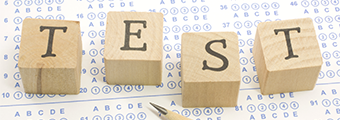Recognising the symptoms of agoraphobia and fear of open spaces
Agoraphobia can appear suddenly or develop gradually, especially between the ages of 18 and 35. It is less common after the age of 40. Physical and emotional reactions to particular situations cause fear… Here’s how to recognise the symptoms of fear of open spaces.

Agoraphobia and panic disorders
In 95% of cases, agoraphobia is accompanied by panic disorder. Many therapists start by treating their patients’ panic attacks before treating the other entity, agoraphobia. This is a relatively complex phobia to treat as there are multiple avoidance behaviours. If you suffer from agoraphobia, you are not only afraid of large spaces in the city (such as parks, squares, gardens), you are also afraid of nature (oceans, fields, lakes), enclosed spaces (lift, plane, train, windowless room), high spaces or underground. In short, these are all situations in which it is impossible for you to escape… It is often the intense nature of these disorders that leads sufferers to consult a health professional.
A feeling of distress
Simply having to go to these spaces can cause panic attacks resulting in feelings of distress. The psychiatric manual (DSM-5: Diagnostic and Statistical Manual of Mental Disorders) describes a panic attack as a sudden onset of intense fear or discomfort that peaks within a few minutes and during which at least four of the following symptoms of fear of open spaces appear:
- Palpitations, heartbeat or rapid heart rate
- Sweating
- Trembling or twitching
- Feeling of “breathlessness” or a sense of suffocation
- Choking sensation
- Chest pain or discomfort
- Nausea or abdominal discomfort
- Feeling dizzy, unsteady, empty headed or faint
- Chills or hot flashes
- Numbness or tingling sensations
- Derealization (feeling of unreality) or depersonalization (being detached from oneself)
- Fear of losing control or going mad
- Fear of dying
These symptoms of fear of open spaces must occur suddenly and reach a phase of maximum intensity within a few minutes to make the diagnosis. Do you have these symptoms?
Panic attacks
Panic disorder is characterised by the occurrence of recurrent and unexpected panic attacks. One of these panic attacks must be followed by one or more of the following symptoms for at least one month (or longer):
- Persistent fear or worry of further panic attacks or their consequences: e.g. losing control, having a heart attack, ‘going mad’.
- Significant behavioural change in relation to the attacks: for example, avoidance of unfamiliar situations.
Specific symptoms of fear of open spaces, agoraphobia
After looking for symptoms that would allow the diagnosis of a possible panic disorder, it is the symptoms that specifically mark agoraphobia that can be identified. Still according to the psychiatric manual (DSM-5), it is marked by the following criteria:
- Fear and avoidance of at least two of the following five situations: public transport, open public places, enclosed places, queuing, being alone outside the home.
- The person avoids these situations because they mainly fear that they will be without help or that it will be difficult to escape from the situation
- Situations almost always provoke fear or anxiety
- They are actively avoided and require a carer, or are experienced with intense fear or anxiety
- Fear and anxiety are disproportionate to the real danger
- Fear, anxiety or avoidance lasts at least six months
- These symptoms lead to social and professional distress or embarrassment
- If another disease is present (inflammation, Parkinson’s disease), fear, anxiety and avoidance are clearly excessive
- These symptoms are not best explained by another mental disorder.
Think you might be agoraphobic? Take the Panic and Agoraphobia Rating Scale test
Consequence of agoraphobia or fear of open spaces
Phobic anticipation
The first direct consequence of all these unpleasant physical sensations perceived in problematic situations for you will be phobic anticipation, or anticipatory anxiety. This mechanism can be likened to “the fear of being afraid“. You now fear your potential reaction in the situation that is causing you anxiety as much as the situation itself. This has the effect that you do not want to face the object of your fear under any circumstances, which actively reinforces the idea, often already well anchored in your brain, that you are facing a very great danger and the panic of facing it. In the case of agoraphobia, you can very quickly find yourself not going out of the house, both because of the fear of public places and because you are afraid of having an anxiety attack in the middle of everyone and being judged for it.
The development of avoidance behaviour
The important thing to remember about agoraphobia is that anticipatory anxiety, contraphobic objects (such as people who accompany you for reassurance when you travel), avoidance, safety and flight behaviours are all interrelated. If you suffer from this, you consider it dangerous to have a panic attack in certain places or situations. So you plan and avoid as much as possible situations that could make you anxious and trigger a panic attack.
Agoraphobia and mental load
These avoidance behaviours end up forcing agoraphobic sufferers to constantly deal with an ever-increasing mental load. If this is the case for you, it will ultimately be this mental load that will guide your entire life. The many obstacles resulting from the phobia will determine your choices and possibilities. These will be severely limited, considerably reducing your autonomy. You will tend to become dependent on the few people who can reassure you enough to function on a daily basis. Your phobia therefore becomes a burden for you as well as for those around you who must also adapt and organise themselves to help you.


